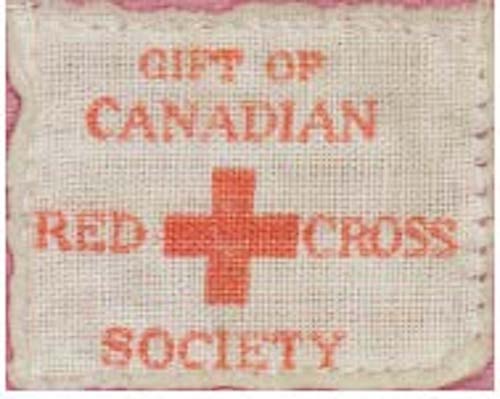In the years that Canada was engaged in fighting World War II in Europe, Canadians at home fought their own battles to keep their homes, farms and businesses running without the young men and women who were overseas. In addition to many men and women taking on new roles in businesses, factories, and farms, Canadians at home also took up the challenge of sending aid and support to the people whose daily lives were impacted by the chaos and carnage in Europe.
Clothes, food, household goods, and bedding were among the items that Canadians shared with their less fortunate Allies, many of whom had lost everything in the bombings, evacuations, and relocations. In addition to all the other war-time initiatives, the Canadian Red Cross and other organizations called upon Canadians to make hospital supplies, quilts, socks, mittens, hats, vests and other clothing for the Canadians fighting overseas and for the victims of the war.
From the quilt standpoint, Canadian families rose to the challenge and sent extra bedding and quilts that they had in their linen cupboards, and as the war continued they began making quilts out of whatever fabric was available to them. Individual quilters made quilts, and quilting groups in churches, schools, and community centres were formed to speed up the production of quilts for the cause. Even children in schools worked on quilts. Fabric mills and factories donated fabric and off-cuts from the manufacturing of uniforms, suits, shirts, dresses, blouses, pajamas, and other garments, and boxes of assorted scrap fabric for quilt making were available for sale in department stores. Quilters who belonged to quilting groups would often contribute five cents at each meeting towards the war effort and the purchase of batting and backing materials. Discarded clothing and other textiles were also sources for quilting projects.
The Red Cross and other organizations organized the distribution of fabric, battings and backings to community quilters and arranged for the shipment of quilts overseas. According to Canadian Red Cross records from five of the nine provinces in existence at that time, over 400,000 quilts were shipped overseas and distributed to those in need during and after the war. Many of these quilts were identifiable by a simple label, ‘Gift of the Canadian Red Cross Society’.
The Canadian Red Cross was not the only organization sending quilts, and many others have been discovered with labels containing the names of other groups, churches and individuals who created them. The total count of Canadian quilts created for the war relief effort will never be known. In 2023, sixty four of these quilts were returned to Canada by the British organization ‘Canadian Red Cross Quilt Research Group’. There are records of only about 300 surviving Canadian wartime quilts in Canada, Britain and Europe. These quilts have an important place in Canada’s history for their record of the lives of people on our homefront, international charitable contributions during wartime and the role of crafts during periods of cultural upheaval.
More information is available on the Suture and Selvedge website hosted by Joanna Dermenjian, providing photographs, stories and resources relating to Canadian wartime quilts: www.sutureandselvedge.com.
Have a quilt to be documented? Ideally the quilt will be 25 years or older. Quilts will be documented on May2 and 3 in North Grenville. Email to book an appointment to have your quilt photographed and documented: documentation.ngquilts@gmail.com






